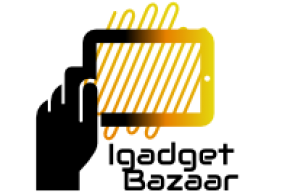If you are like me you have probably frequently found yourself praying for more hours in the day! I am constantly at war with time as there never seems to be enough of it. I look at my watch and it is first thing in the morning and then I look again and find out it is lunch time. Where does the time go and how on earth did people keep track of it before there were watches and mobile phones?

Pre-History
The earliest form of time keeping was almost certainly the tracking of astrological bodies such as the moon and the sun with their positions determining the season and the time. Ancient hunter gatherers may have used simple implements like stick and bones to help them but there are no recorded details from the period and so we can only guess at how things were done.
The First Timepieces
The first devices for keeping track of the time that we really know about are shadow clocks. These clocks used the shadow cast by the sun to illustrate the time and the oldest known examples are from ancient Egypt. The Egyptian shadow clocks divided the day into 14 sections rather than 12 hours. Obelisks (pointed vertical columns) were also used to tell the time and if you are unable make a trip to Luxor to see an example of an obelisk, Cleopatra’s needle in London will give you a good sense of the structures. Shadow clocks which evolved into sundials were used for centuries as the principle means of telling the time.
As devices which rely on the sun to display the time were clearly problematic at night or on cloudy days the Egyptians developed water clocks which were containers with holes which allowed a measured amount of water to pass into another vessel with markers. These markers illustrated how much time had elapsed. Water clocks could also be perforated, floating bowls into which water would gradually seep. The level of the water in the bowl would indicate the passage of time. The ancient Egyptians are also credited with inventing the hour glass which used the passage of sand to mark the passing of time. Water clocks, sundials and hour glasses in various forms were developed by the different civilisations across the world and remained in use until the first mechanical devices were invented in medieval Europe.
Clocks
The first mechanical clocks appeared late in the 13th century and consisted of an arrangement of gears and wheels that were made to turn by the falling of a weight. These timepieces could only be constructed in towers due to the distance the weights had to fall and were pretty inaccurate. These devices were used to sound a bell in the tower and indeed the term clock originates from the French word cloche which means bell. Clocks became more and more accurate especially after Galileo made an important discovery in 1581. He was watching a swinging chandelier in the Cathedral at Pisa when he realised that no matter how short or lengthy the arc of the chandelier was it took the same amount of time to travel the distance of the swing. This epiphany led to the invention of the pendulum clock which is still widely used today.
Accuracy
We all now have highly accurate timepieces at our disposal and so it is difficult to imagine what life was like when indicators of time merely gave approximations. As I am so constantly challenged by time I think that maybe ancient civilisations had it right were a lot less stressed!
Sally Stacey is an entusiastic writer with many demands on her time. She wishes that the clocks would stand still for her but it never happens!



